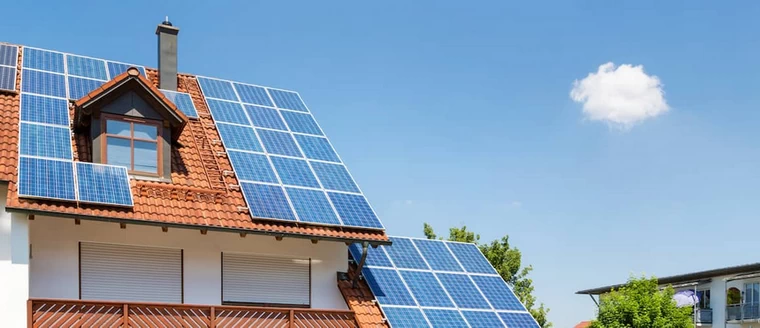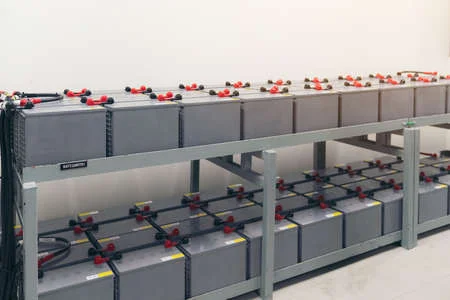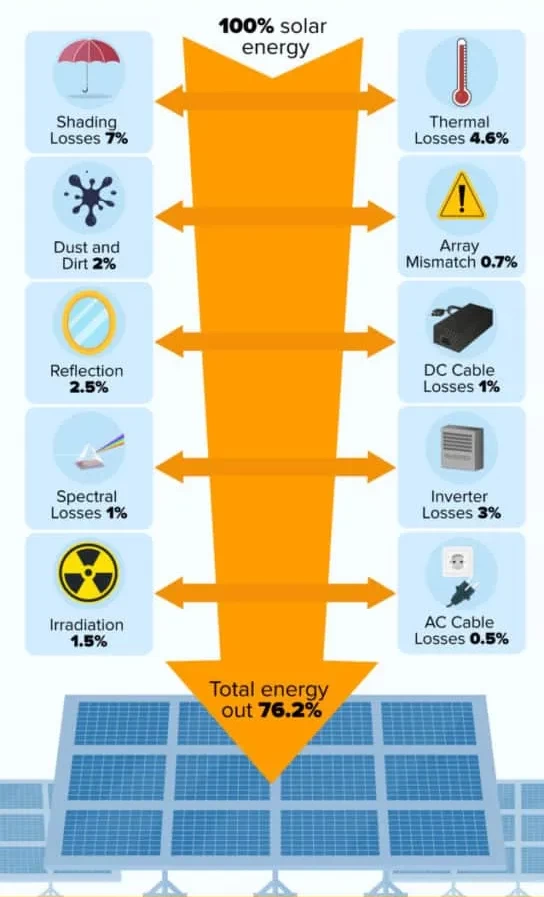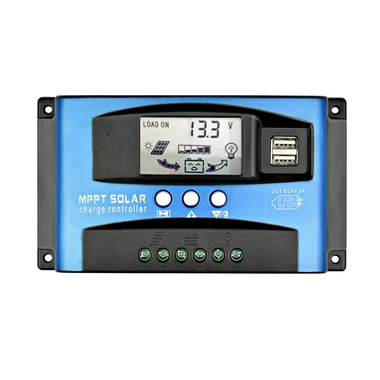Page Contents
- How To Size A Solar System
- How to calculate your home’s energy consumption
- What number of batteries are required to power a house?
- Ways to Calculate the Size of a Solar System
- How many solar panels are needed to produce 5000 watts of power?
- Roof characteristics
- the Solar Charge Controller
- Key Takeaways
- FAQ:
- Related Solar News
- Solar Сategories

How To Size A Solar System
In the solar sector the term “solar size of the a solar power system” refers to define the capacity of a solar panel system to generate electricity. It is typically expressed in the form of Kilowatts (kW) 1 kW equals 1,000 watts. The majority of home solar panel systems range from 4 kW to sixteen kW in size.
Solar system dimensions are the primary thing to consider when you are researching or purchasing solar panels to install on your house. It’s because it’s the dimension of your own solar panel array and not the solar panel’s effectiveness or the brand of equipment that determines the amount of solar power to be produced on your roof.
A solar panel system of 10 kW will generate 10,000 watts of power in Standart Test Conditions*. In real-world situations such as a 10 kW full solar installation the panel will generate less power because all of the elements will not be as perfect as they would be in a test laboratory. The total amount of electricity produced from a 10 kW unit in a roof is somewhere between 1,440 to 1,800 kilowatt hours of electricity each month.
What Are Standard Test Conditions (STC)?
These are the requirements required by solar panel manufacturers to work at their capacity also known as the capacity on the label. The solar cells should be able to produce precisely 1,000 watts of light per square meter that shines on them, and they must operate at a steady temperatures of at least 77°F (25C). Each solar panel is assigned an performance rating (‘size’) under STC laboratory testing.
How to calculate your home’s energy consumption
It is possible to add up all the wattage of energy efficient appliances and calculate how many per watt hours of each appliance is being used per day. However, this is cumbersome and inaccurate. Some appliances, like refrigerators, their power consumption energy usage can be hard to estimate. They have compressor motors and variable instantaneous power.
The easiest way to get it is to use the utility company’ bill from last year, which usually shows the entire year’s energy consumption ( kWh). Divide this number by 12 to get your monthly energy consumption, or 365 to get your average daily consumption. The average US electricity usage amount is 30kW per Day. However, yours electricity usage will vary depending on where you live.
What number of batteries are required to power a house?

Battery storage
Battery storage can have a significant impact on the size of a solar power plant. The following factors will determine how much battery storage and the solar panel size and system size it will have an impact on:
Backup power needed
Are you looking for emergency lighting that lasts for a few hours if off grid down? Do you need enough solar-plus storage to power your entire house for 24 to 48 hour if the off grid ever goes down?
While the former option won’t have an impact on solar system amount size, the second will. You need to ensure that your solar system output is large enough to meet your daily energy needs and fully charge your batteries even on days when there’s very little solar production. A cloudy day in winter.
If your home consumes daily energy consumption of 30kWh per 24 hours, you can quickly calculate how many batteries you will need.
There are 2 types of batteries for home use
- LiFeP04
- lead acid
I prefer , but since lead-acid is still the most popular, I’ll use them as an example. Deep-cycle batteries can be charged up to 80%, but it is best to discharge 50% to extend battery life. This means we need to double how much energy is required from the batteries. It is okay to have a depth of discharge of 80% from time-to-time.
This is how the calculation looks:
Energy for 24 hours = 30kWh
30kWh in battery amp-hours (Ah) = 2500Ah (12V batteries)
Total battery capacity needed for 24 hours = 2500Ah x 2 = 5000Ah
25 batteries rated at 200Ah will be the energy required to power this home for 24 hours.
Ways to Calculate the Size of a Solar System
PVWatts
PVWatts, a free online tool created by the National Renewable Energy Laboratory of (NREL), a national laboratory of the Department of Energy. PVWatts uses the historical data, weather and solar irradiance records to analyze solar photovoltaic system (PV), buildings all over the globe and energy usage.

PVWatts gives you a precise breakdown of the system’s output in watt hours, down to the hour, based on your location.
It is a powerful tool to calculate solar, and can be used by solar companies to create advanced solar analyses and estimates, as well as consumers-facing tools to calculate solar.
PVWatts’ biggest flaw is that itdoesn’t actually calculate solar system size for you – you’ll have to use the tool to do it yourself. It requires a little reverse engineering to do this. You will need to divide your annual energy consumption by the number of solar panels and energy that 1 kW of panels can produce.
PVWatts – Pros & Cons
Global Solar Atlas
The Global Solar Atlas provides a summary of solar power potential and solar resources globally. It is provided by the World Bank Group as a free service to …
Let’s take this resource as an example:
Let’s assume that the house is located in Nevada USA. The average daily electricity power consumption there is 35kWh.
The irradiation at this site Global Solar Atlas is 6.773Wh/m2/day.

- Geographic Location: Nevada, USA
- Average daily energy consumption: 35kWh/day
- Irradiation (peak-sun-hours) for Burns, Oregon is 6.773kWh/m2 per day
PV System Losses
A working home solar system can cause losses. 23% can be lost, and this must be taken out of the solar array power rating.

With 23% losses in mind, the energy needs are:
35kWh/day x 1.44 = 50.4kWh/day load.
Now to take into account the efficiency of the inverter, which is about 96%.
The power to be supplied to the inverter = 50.4/0.96 = 52.5kWh/day.
The average daily irradiation is 6.773kWh/m2 (also known as peak-sun-hours)
52.5kWh/day of power can be produced by:
- 52.5/6.773kWh/m2= 7.75kW or 8kW of solar panels working at 100% capacity rating.
- To find the number of solar panels needed, divide the wattage needed by wattage of each solar panel (say, 300 watts):
- The number of panels needed = 8kW/300 watts per panel = 26 solar panels.
Solar Company

To make the most precise projections of solar panel production and electricity needs, solar companies may combine tools such as PVWatts and an in-person assessment. Reputable solar companies will gladly calculate the best solar system size for your energy requirements and offer a free quote.
Solar company – Pros & Cons
How many solar panels are needed to produce 5000 watts of power?
It may seem obvious to you, but it is not as easy as it seems. If we were to use 300-watt solar panels then in theory would divide the power needed more solar panels by 300, which would give 16.6 kilowatt hours or 17 panels, if you round up.
Unfortunately, it’s not like that in the real world
Although many solar panels themselves are rated at 300 Watts, this is not the maximum you can expect from them. Instead, the Standard Test Conditions (STC) specify a level of 1000 W per square meter.
Except for the difference in irradiance all solar systems experience losses around 23%. To account for this loss, you will need to multiply your solar system output by panel rated powers. This is equivalent to multiplying total power by 1.44.
- 5000 watts x 1.44 = 7000 watts
- Number of solar panels required = 23 panels each rating at 300 watts
Roof characteristics
The orientation (‘azimuth’) and pitch (‘tilt’) of your roof will determine the orientation and angle of your solar panels. Both factors, especially direction, can have a considerable impact on solar energy production.
A solar array facing east or west will produce approximately 15% less output than one facing south. If you can only install on an east or west-facing roof, you’ll have to increase the size of the solar system to account for that.
the Solar Charge Controller
Any solar power system design that has backup batteries many solar panels should have the Solar Charge Controller to ensure that the batteries are not charging too much and also to stop the batteries from returning their charge back to solar panels during periods of low sunlight (i.e. the nighttime).
Because a solar controller performs its job in conjunction with the array of solar panels and storage battery, it follows that the selection and system size is determined by the components.

Current and voltage are the two variables used to determine the size of the latest solar panels and charge controllers. The solar power controller should be able to handle the highest power output from solar panels and delivering the right DC charge current and voltage to batteries.
For systems operating continuously, that is the standard industry 1.2 (20 percent extra) de-rating rate is set to protect the controller from being damaged by excessive solar panel power or current.
Example:
12 volt solar panels with a capacity of 100 W with the following electrical characteristics:
- Pm = 100Wp,
- Vmp = 17.5 Vdc,
- Imp = 5.7A,
- Voc = 21.0V,
- Isc = 6.2A.
The solar panels described above have a short-circuit current (Isc) of 6.20A. The solar charge controller rating for four solar panels rated at 6.20A
4 x 6.20 x 1.2 = 29.76A, or 30 amps.
A solar charge controller like the one pictured above should be rated at 30 amps at 12 volt or more.
Key Takeaways
- When sizing solar panels, consider how much electricity your home uses.
- To find the PV system that is most in need of replacement, use the utility bills monthly average.
- A 5000 kw system suffices for an average American home.
- A solar energy system’s installed cost can nearly double if a battery bank or other storage device is required
- To save money on solar costs, you can use your old electric bill to identify ways that electricity consumption can be reduced.
- How much electricity is used by air conditioner ? To spread the load, it’s a smart idea to install soft-starts ( National Renewable Energy Laboratory).
- The next step, is to determine how many hours of sunshine per day. How much solar energy can you generate for each square foot with solar panels mounted at the average radiation level in your location?
- The peak sunlight hours is very important in calculating solar size. Sunny days can come and go so the average solar hour across the seasons is the figure you should use
- How large is your roof in square feet This factor, along with the amount sunlight, determines the size and output of your photovoltaic system.
- The peak hours and solar system size give you an rough estimate how much solar power will you have.
FAQ:
between 5 and 15 years old
Solar panels will pay for themselves over time in the form of saving your money from electric bills as well as, in certain cases making you money through continuous incentives. The payback period for solar panels is between 5 to fifteen year within the United States, depending on the particular location that you reside in.
- Usage
- Available sunlight
- Weather and solar insolation
- The characteristics of the roof
- System losses
- Storage for batteries





